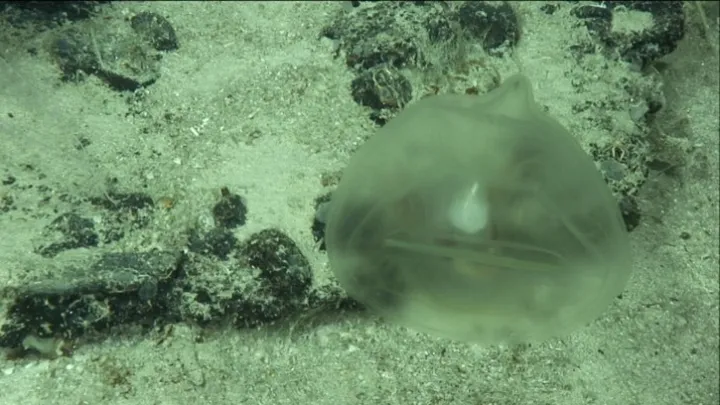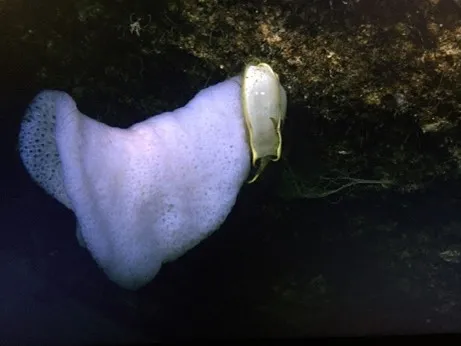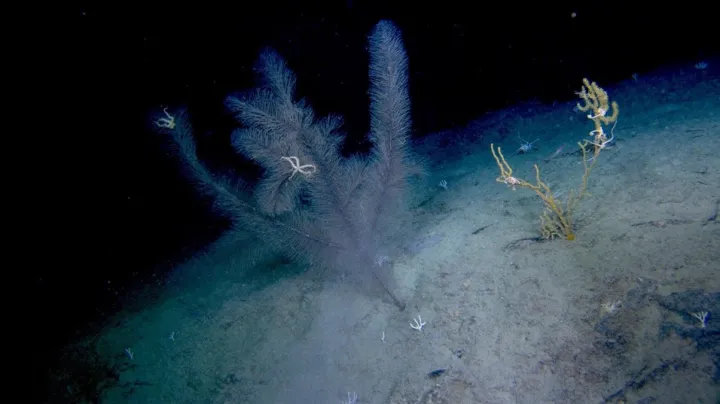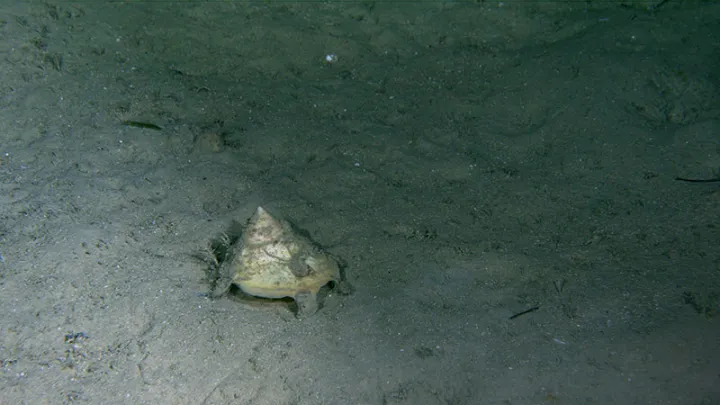Discoveries in Puerto Rico's Deep Sea
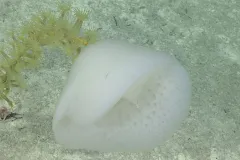
In April of 2022, Smithsonian scientists traveled for 10 days aboard the NOAA research vessel Nancy Foster to explore life in the deep waters of the Caribbean off the Puerto Rico coastline. This was the first Smithsonian-led expedition to Puerto Rico in 100 years. The deep canyons and shifting tectonic plates in this area create a diverse seafloor with various bottom surfaces—some rocky, smooth, sandy, some with crevices for hiding, and some open for easy hunting. The nutrient rich waters and topographic highs of seamounts and canyon walls can be ideal places for immobile seafloor organisms to feed, and they are all just a short distance from the island’s shores. This makes Puerto Rico’s waters a place extremely rich in biodiversity and very important to deep-sea life. It also makes it a place ripe for exploration.
Let’s take a look at what Smithsonian scientists Andrea Quattrini, Allen Collins, and Cristiana Castello-Branco and their academic and NOAA colleagues found on their recent journey. From new species in the Caribbean to 1,000-year-old deep sea corals, the discoveries are truly amazing.
Red cydippid comb jelly
Ctenophores, or comb jellies, are small, gelatinous creatures that live in almost all ocean regions, and throughout the water column. This red ctenophore was encountered near the bottom at roughly 3,900 feet, or 1,200 meters, in depth. It is likely a species never before discovered. Often, deep-sea ctenophores are able to produce bioluminescence, perhaps as a defense mechanism or a way to capture prey, and so Smithsonian scientists tried to image bioluminescence from the red cydippid. Unfortunately, they were unsuccessful this time, and while likely, it remains a mystery whether this particular species luminesces like other deep-sea jellies.
Predatory Tunicate (Octacnemidae)
Most people have never heard of tunicates, likely because they are blobs in the sea that might not look very interesting. But tunicates are our closest invertebrate relatives. Although they do not have vertebrae, they are part of the Phylum Chordata, which also includes animals with backbones. That makes humans and tunicates distant relatives. The most common tunicates are sometimes called sea squirts because when touched or alarmed by a sudden movement, their muscles contract, and the water in the animal shoots out. One kind of tunicate observed during the expedition was predatory, feeding on other invertebrates by ambushing them within a gut-like structure and then using enzymes to digest their captured prey. Though tunicates like this one are found in many other places across the world like Antarctica, off the coast of Madagascar, and California, the family of this species hadn’t ever been recorded in the Caribbean. Unlike many tunicates, this one is quite big. When the Smithsonian scientists tried to collect it, it didn’t fit in their collection container!
Deep Sea Sponge (Euplectellidae)
Sea sponges are truly unassuming creatures—they are an amorphous and unmoving mass of porous tissue on the seafloor, so it is easy to think they aren’t even animals. However, they are likely one of the oldest lineages of animals on the planet. They even produce chemicals used in lifesaving drugs. In the deep sea, sponges provide habitat for other organisms to grow upon, creating mini communities, as well as serving as a resting place for other animals’ eggs, including catsharks and cephalopods. Two shrimp were found living inside the vase-shaped glass sponge encountered on the expedition. These special shrimps have a symbiotic relationship with the sponge—the sponge houses the shrimp and the shrimp clean the sponge’s skeleton. Often a male and female shrimp couple will call the glass sponge home for their entire lives.
Black Coral
Corals aren’t just found by sunny beaches and close to shore, they, too, can live in the deep sea. Lush coral gardens thrive up to 20,000 ft (6,000m) below the ocean’s surface. Scientists have discovered nearly as many species of deep-sea corals as shallow-water species. One of the species encountered on this expedition was a black coral, a deep-sea coral that can live to be thousands of years old. Black corals provide habitat to ecologically and economically important species. Unlike shallow corals, however, deep-sea corals do not rely on sunlight. They obtain the energy and nutrients they need to survive by trapping tiny organisms in passing currents. Because they don’t depend on warm water or sunlight, deep-water corals can be distributed all over the world - from the poles to the tropics. To date, more than 3,300 species of deep-sea corals have been identified, and the numbers keep climbing. Notably, black corals are commonly harvested in several places for jewelry. Throughout the past, they have been overfished and illegally traded, but some countries actively manage sustainable fisheries for black corals.
Carrier shell (Xenophora)
This snail gets its name because, you guessed it, it ‘’carries’’ other things, including coral pieces, other shells, and stones, on its back. The snails will grab an object with their muscular foot and hold it in place on the shell while the mantle secretes a sticky substance to glue it onto the shell. As they grow, they keep adding more. The big and sharp pieces make it hard for predators to bite the shell or eat it whole, as well as work as an excellent source of camouflage. These complex and beautiful shells are often collected alive to sell for collections, decorations, and more.


